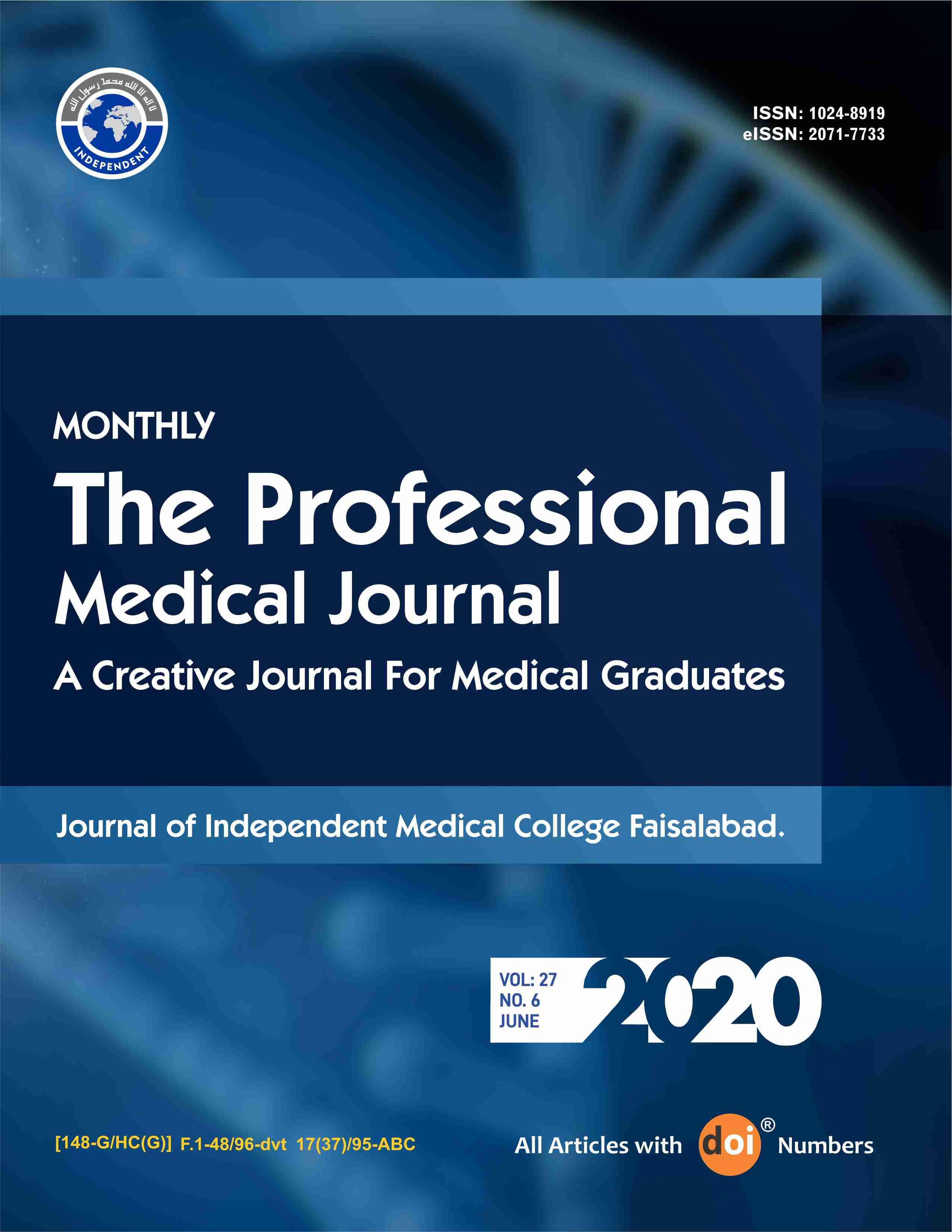Comparative study on intramedullary nailing versus AO external fixation in the management of gustilo type II, IIIA, and IIIB tibial shaft fractures.
DOI:
https://doi.org/10.29309/TPMJ/2020.27.06.4096Keywords:
External Fixation, Intramedullary Nailing, Open Fractures, Tibial DiaphysisAbstract
Objectives: To compare the external fixator and unreamed interlocking nail in treating Gustilo type II, type IIIA, and type IIIB tibial diaphyseal fractures regarding complications. Study Design: Cross-Sectional and Comparative Study. Setting: Department of Orthopaedic Surgery and Traumatology (DOST) Liaquat University of Medical and Health Sciences Jamshoro/Hyderabad. Period: Two years February 2016 to January 2018. Material & Methods: 40 cases of open tibia fractures in Patients of Gustilo type II, type IIIA, and type IIIB tibial diaphyseal fractures were included. The data were analyzed using the statistical program SPSS version 16.0. Results: A total of 23 cases were treated by external fixator and 22 cases were treated by unreamed solid interlocking nail. A total of 14 cases, that is, 31% showed delayed union. Type II injury 3/15 = 20%; Type IIIA injury 6/22 = 27.3%; Type IIIB injury it is -5/8 = 12.5%. For cases treated with unreamed nail, it was 22.7%; external fixator was 39.1% among 45 cases, 05 cases showed nonunion. For cases treated with unreamed nail, it was 13.6%; external fixation was 8.7%. The overall rate of eep infection is 11.1%. The rate in interlocking nail was 13.6%, and external fixation was 8.7%. Reoperation in the form of dynamization and bone graft application after 20 weeks in unreamed nail was 36.4%, whereas in external fixation the rate was high, almost 48%. The average time of union with unreamed interlocking was about 25.4 weeks, wherein external fixation it was 28.6 weeks. Conclusion: External fixators are a good and reliable method of stabilization of Gustilo type II, type IIIA, and type IIIB tibial diaphyseal fractures, unreamed interlocking intramedullary nail yields better results in treating Gustilo type II and type IIIA tibial shaft fractures.


